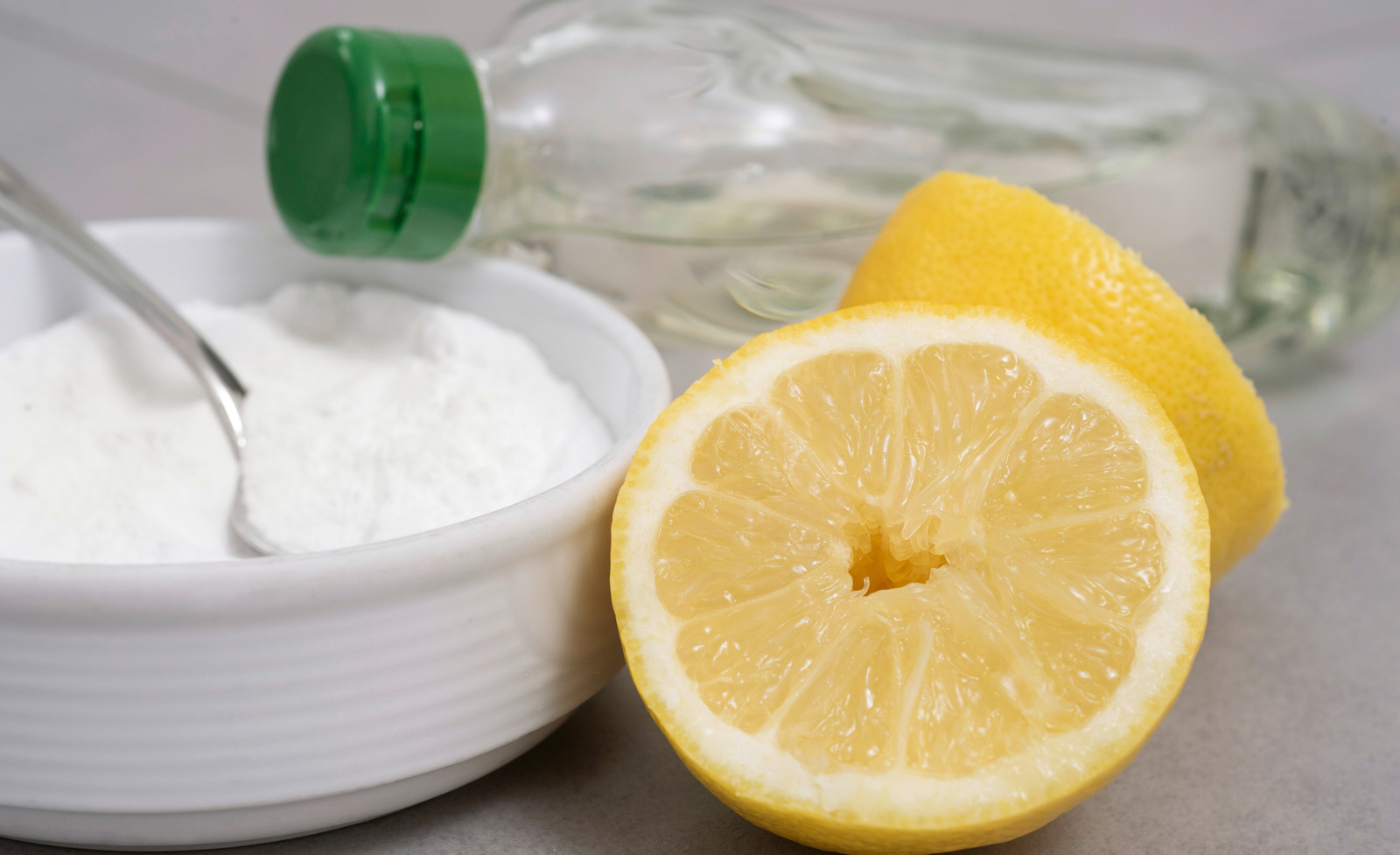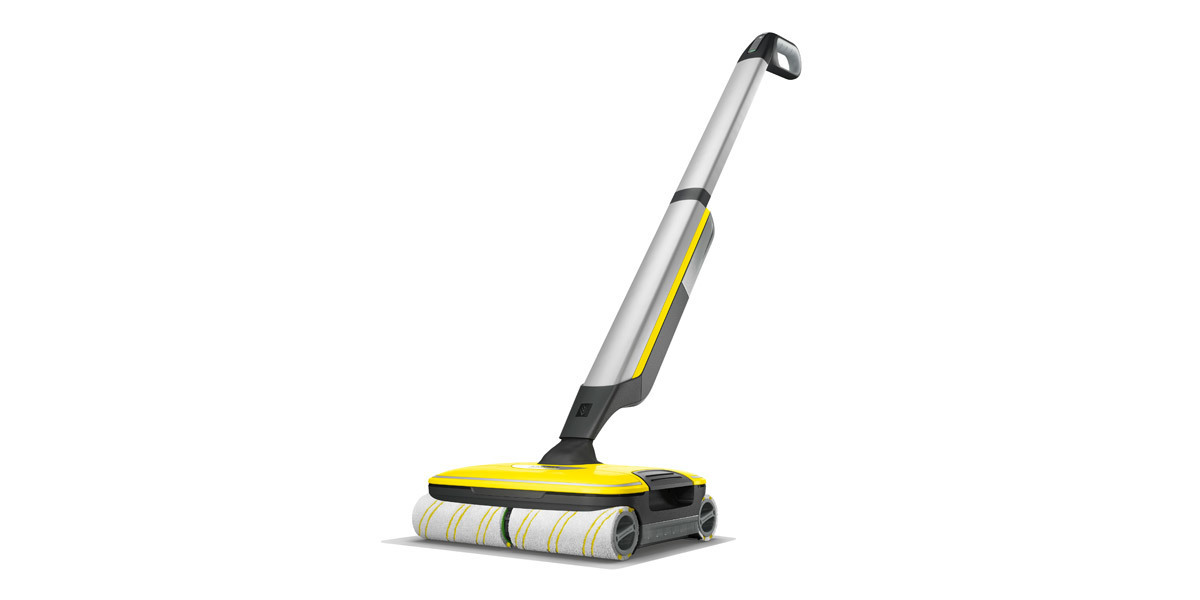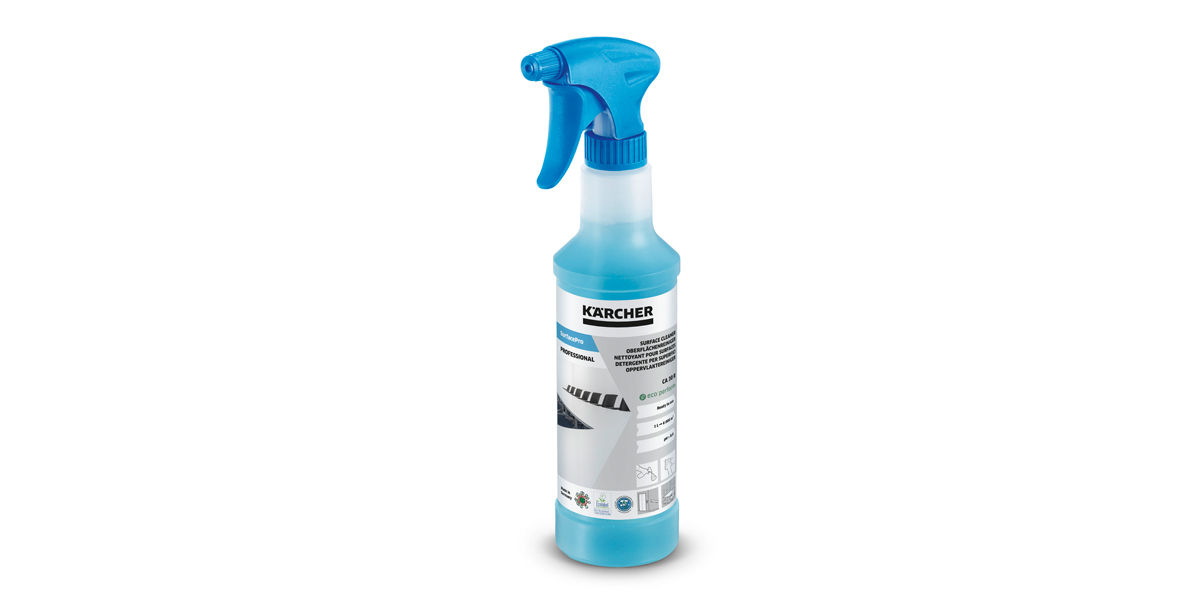Cleaning the kitchen: Keeping your fridge and surfaces clean
The kitchen is the heart of many households and sees a great deal of use every day. Cleaning should therefore not be neglected, since all kinds of dirt and bacteria accumulate in the fridge, on the worktop and on various surfaces over time. Keep your kitchen hygienic and clean with these tips.
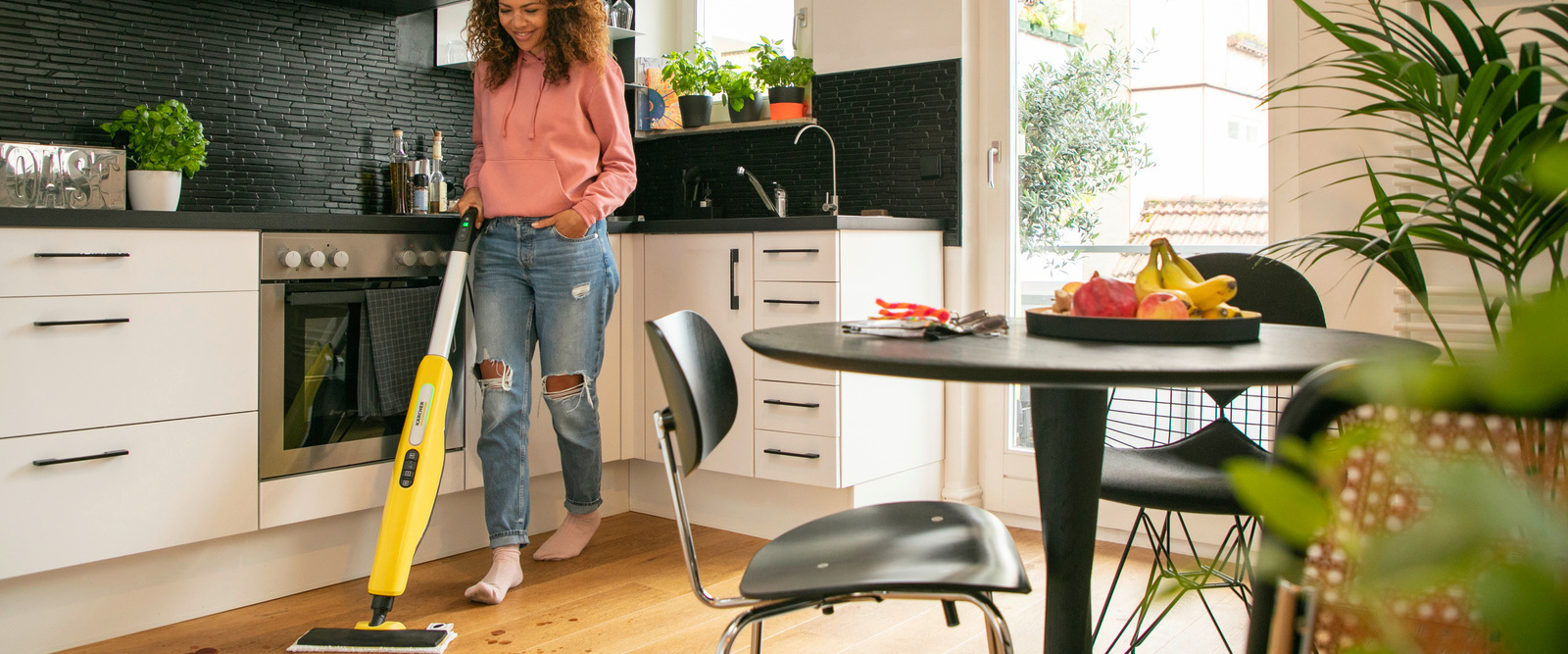
Tips for a clean kitchen
Nowadays, the kitchen is not just a functional space for cooking and eating – instead, it has become a place where family and friends meet. It's where you have your tea break, where you bake together, relax while cooking and find out what's going on from each other. The kitchen therefore sees a great deal of use: Cooking leaves behind flecks of fat and food residue, food leaves marks in the fridge, and limescale forms over time on sinks and taps, as well as in dishwashers and coffee machines. All of this dirt should be removed regularly to ensure the kitchen remains hygienic and clean.
An additional challenge is the variety of materials found in a kitchen: Modern facilities usually combine smooth and glossy surfaces such as stainless steel and glass with delicate natural materials like stone and wood. Cleaning should therefore be adapted to the type of surface as well as to the dirt. The same is true when using detergents.
Kitchen cleaning tasks
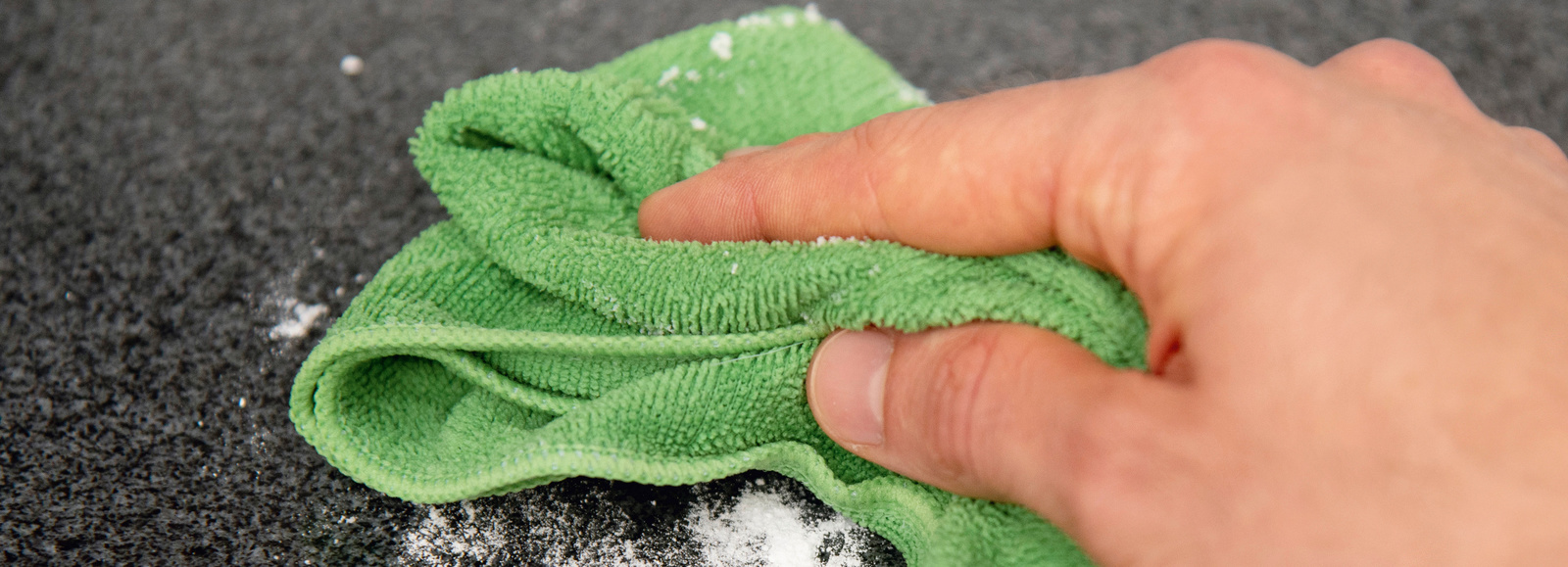
Cleaning the countertop
The countertop is probably the most used surface in the kitchen and comes into contact with food particularly frequently. It's where you chop vegetables, fillet fish and roll out dough. This means that the area is contaminated with bacteria, invisible to the naked eye, on a daily basis. If only for hygiene reasons, this work surface should therefore be wiped with a damp cloth after every use, as well as completely tidied and thoroughly cleaned once a week. For more significant dirt, an alkaline surface cleaner can also be used on water- and alcohol-resistant countertops to remove dirt such as food stains and grease.
Caution is required for natural stone, such as with countertops made of granite or marble, since acidic cleaning agents or those containing solvents may attack the material. Here you can use the special cleaner for stone surfaces from specialist retailers, ideally a neutral cleaner. Furthermore, surfactant-free detergents are recommended. Essentially, dirt on natural stone countertops should be removed as quickly as possible. Use a soft, damp cloth for wiping. A dry cloth in combination with dirt may cause small scratches. After using detergents, always rinse with clean water, then dry the area with a clean cloth to prevent spots from forming.
A chemical-free and gentle alternative for cleaning countertops is a steam cleaner. Pressure and hot steam remove 99.99 % of all typical household bacteria, while grease and stubborn dirt such as encrusted food residue can also be easily removed. The steam cleaner is also ideal for cleaning your exhaust hood, hob and oven.

Tip: Cleaning smooth surfaces with the cordless wiper
All smooth surfaces in the kitchen, such as the countertop, glass surfaces, glass ceramic or induction hob, and kitchen cabinet and drawer fronts that are not delicate can be cleaned effortlessly with a vibrating cordless wiper. The advantage here is that the surfaces are automatically moistened during cleaning. The vibrating function also removes dirt without requiring a great deal of effort. The area can then be dried with a cordless Window Vac or a microfibre cloth.
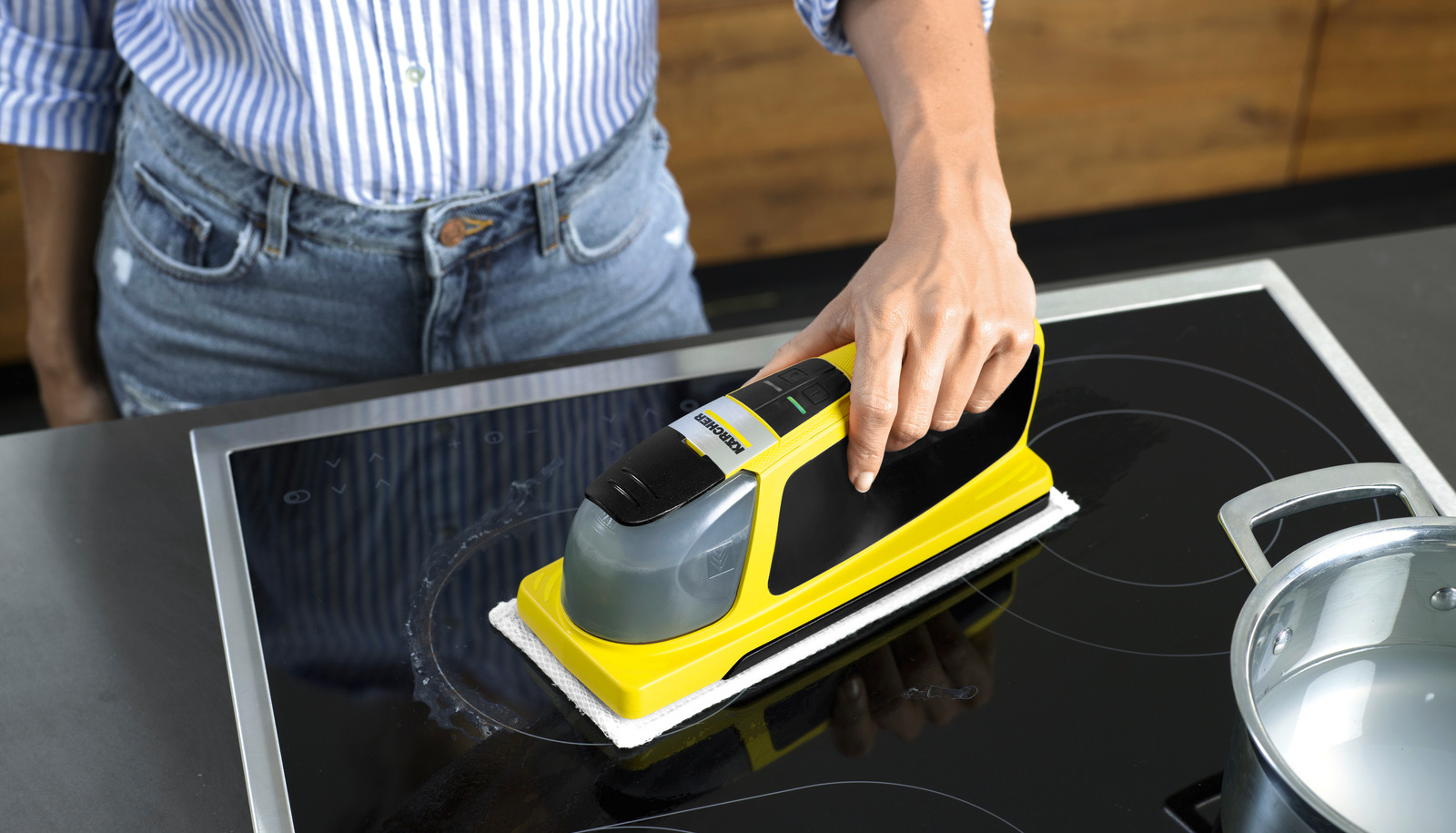
Cleaning kitchen cabinet and drawer fronts
Using the kitchen every day means kitchen cabinet and drawer fronts don't escape unscathed over time. You soon start to see grease stains and fingerprints on kitchen cabinet and drawer fronts, especially those with a high gloss finish. But splashes of sauces or other liquids should also be quickly removed. You can use a commercially available, water-soluble detergent or just water and mild washing-up liquid to clean all types of kitchen cabinet and drawer fronts. After cleaning, always rinse with clean water and carefully wipe dry – especially around profiles, corners and edges. Depending on the material, only use a slightly damp cloth when wiping. Aggressive or abrasive detergents should be avoided for kitchen cabinet and drawer fronts, since they may cause scratches or attack the surface. The same is true for abrasive cloths or sponges.
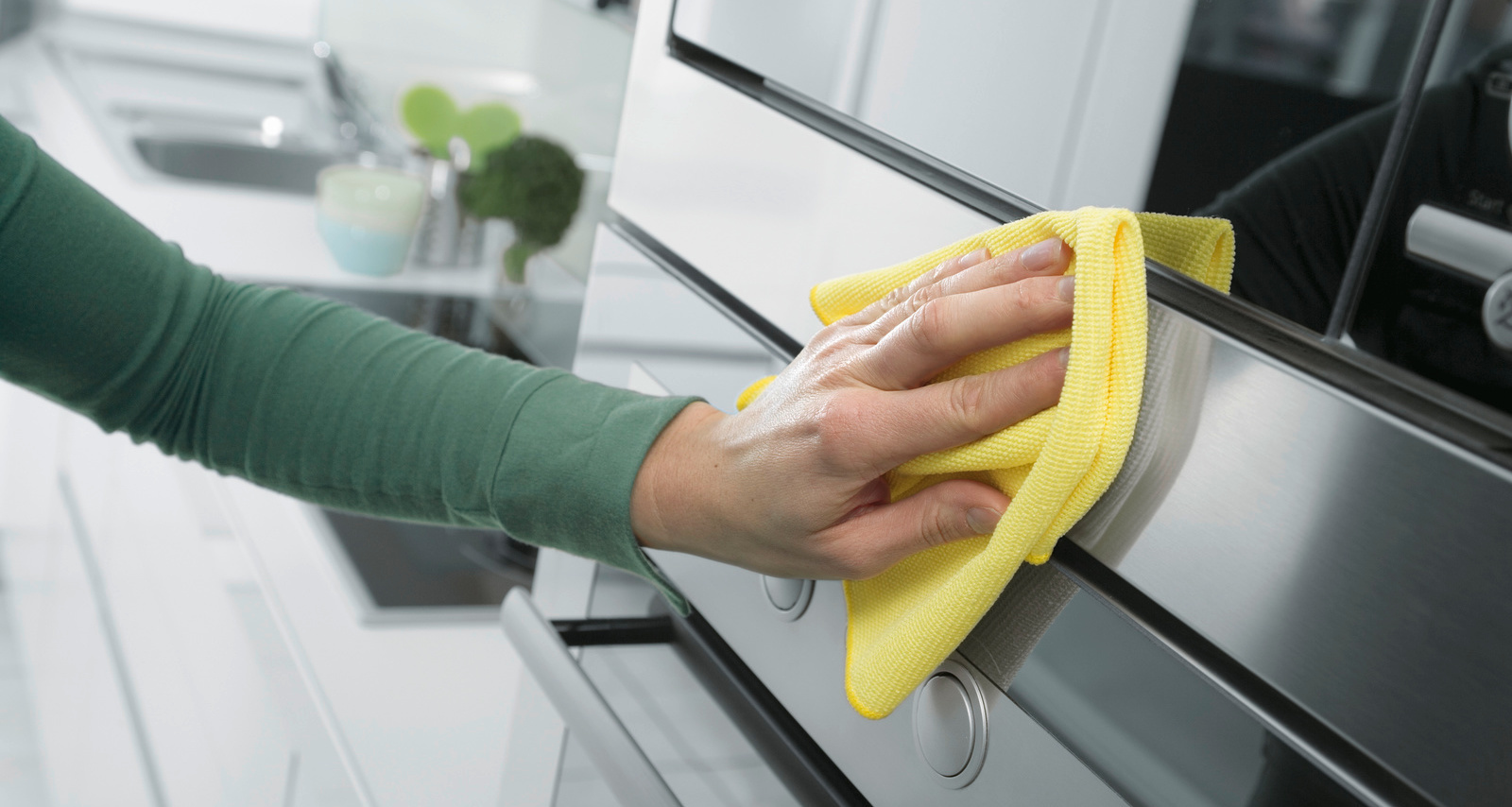
Fingerprints and limescale quickly become visible on kitchen cabinet and drawer fronts made of glass. Limescale can be removed with vinegar or citric acid. Commercially available glass cleaner or water with squirt of washing-up liquid are useful to combat fingerprints.
Wooden cabinet and drawer fronts can be cleaned with a water-soluble detergent and a slightly damp cloth or soft brush. For fronts with a wood veneer, you can use special furniture cleaner that also maintains the surface. As a general rule, don't wet wooden cabinet and drawer fronts, always work in the direction of the grain and rub dry well afterwards.
Stainless steel surfaces can be cleaned with a special stainless steel cleaner if they have significant dirt on them. However, wiping with a damp microfibre cloth is often enough, since stainless steel surfaces are generally easy to maintain. Care products that form layers are not recommended.
Did you know? Breeding grounds for bacteria in the kitchen
- Chopping boards: Chopping boards with deep cuts are a perfect breeding ground for bacteria, since they are particularly adept at settling in the grooves. This means that it's not enough simply to rinse chopping boards in warm water. It is more effect to put them in the dishwasher, or clean them with sufficient washing-up liquid and a sponge.
- Kitchen sponge: Kitchen sponges are often a real hotbed for bacteria. Over 300 types of bacteria can be found on a single dishcloth. Sponges should therefore be changed once a week.
- Knife block: Knife blocks with their slots are also an ideal place for bacteria. Damp knives give additional support to bacterial growth, so you should clean your knife block with a narrow brush and soapy water once a month. It is important here that you always let it dry completely before putting the knives back in.
- Countless microscopic contaminants can be found on floors, in particular in front of the sink, cupboards and fridge. These areas should be thoroughly cleaned at regular intervals.
Cleaning the fridge
Fridges can also be real breeding grounds for bacteria. Hygiene is particularly important here as this is where a wide variety of foodstuffs are stored. To clean the fridge, first unplug it or switch it off and remove the food from inside. Most bacteria in the fridge can be found in the vegetable drawers, since this is where the temperatures are higher. Shelves and drawers must therefore all be removed and thoroughly cleaned in the dishwasher or sink. Then clean the inside of the fridge and seals from top to bottom with a cloth and multi-purpose cleaner. Spaces that are difficult to reach can be carefully cleaned with a wooden skewer. For example, use a cable tie or toothpick to clean the drainage hole. This will prevent condensate from collecting inside the fridge. After that, dry the fridge, put everything back in again and plug it in. Cleaning your fridge regularly can also prevent unpleasant odours.
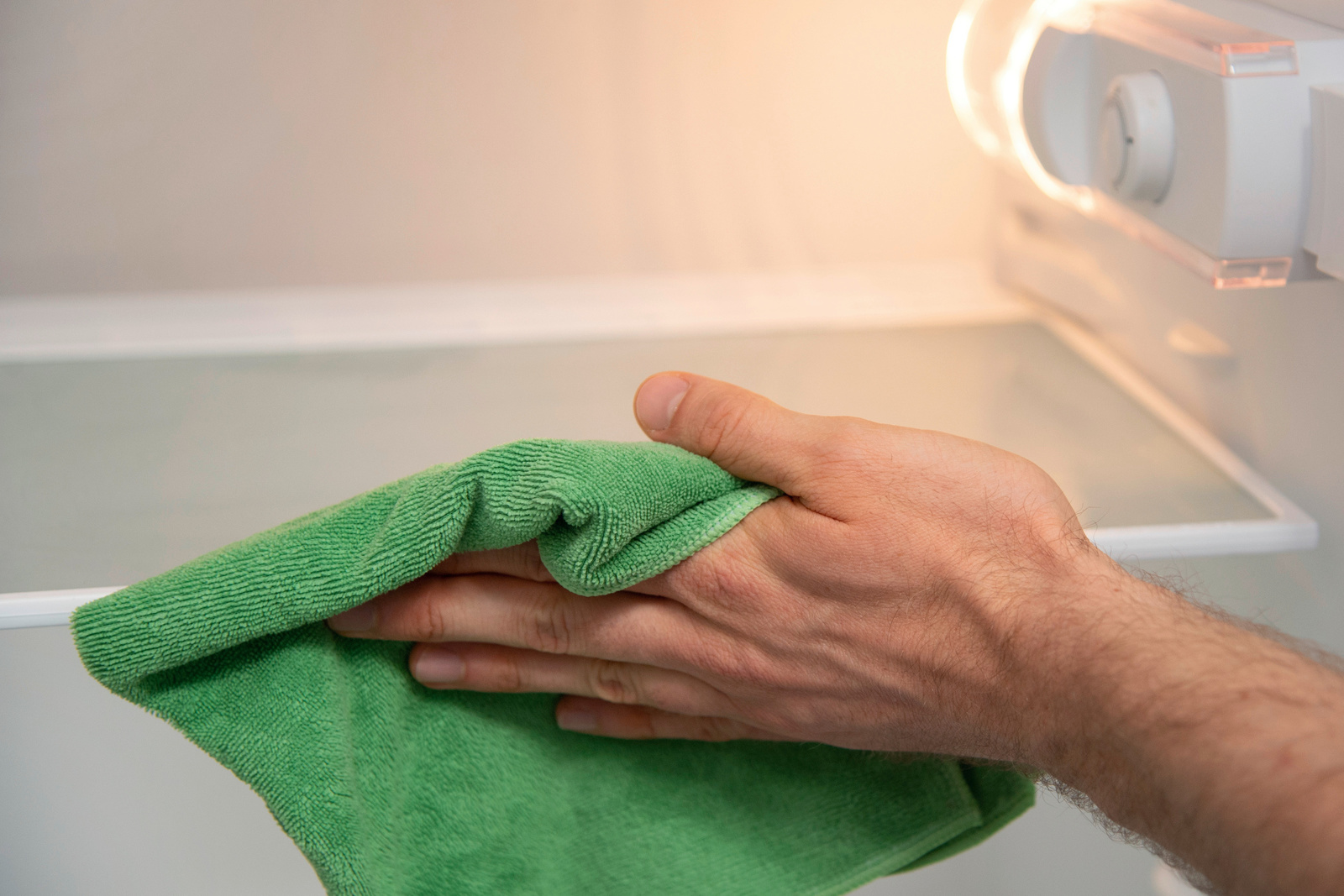
After thoroughly cleaning the inside of the fridge, you should regularly clean the outside too – if possible, move the fridge forwards slightly to be able to remove dust and dirt from the back of it. A vacuum cleaner or feather duster can help here. Furthermore, the floor under the appliance should be mopped. Wipe down all the external walls with water and washing-up liquid, then dry with a soft, lint-free cloth.
Tip 1: If your fridge is full, simply turn down the temperature a little so that cold air circulates less and bacteria can't multiply as effectively.
Tip 2: Defrost your chest freezer or freezer drawers in the fridge at least once a year, because the more iced up a freezer is, the more energy it uses for cooling. What's more, too much ice may spoil food since the required minimum temperature of -15 °C is no longer being consistently reached. To thaw out the freezer drawer, switch it off and put a container with hot water inside it to encourage the ice to melt. Using a steam cleaner with a power nozzle can speed up the process.
Cleaning the kitchen with household remedies
If you want to clean your kitchen with simple household remedies, there are just a few ingredients you need:
- A paste made of baking powder and water helps to remove stubborn dirt from the oven or baking trays: Apply the paste to the affected areas and, ideally, leave it to work overnight. The next day, simply remove the dirt, for example with a plastic scraper, and wipe clean with a damp cloth.
- To remove grease from surfaces and cupboards, often lukewarm water with a little washing-up liquid is enough.
- Stainless steel surfaces can be easily cleaned with a damp microfibre cloth. Cream of tartar is useful to combat rust stains and coarse dirt: Mix with a little water so that a paste forms, apply it to the affected area and gently scrub with a soft sponge. After that, wipe off and polish with a damp cloth.
- Vinegar or citric acid helps to remove lime deposits. Both of these household remedies are also suitable for cleaning drains and combating unpleasant odours. However, acids should not be used to clean anodised or chrome-plated surfaces.
- Wood can be cleaned with soda. For significant dirt, add one tablespoon of soda to one litre of water, and use it to clean wooden cabinet and drawer fronts or wooden chopping boards with a soft-bristled brush.
